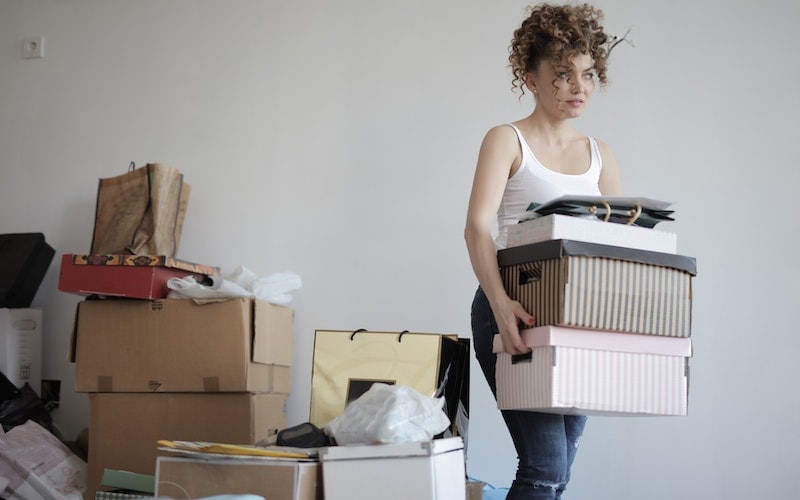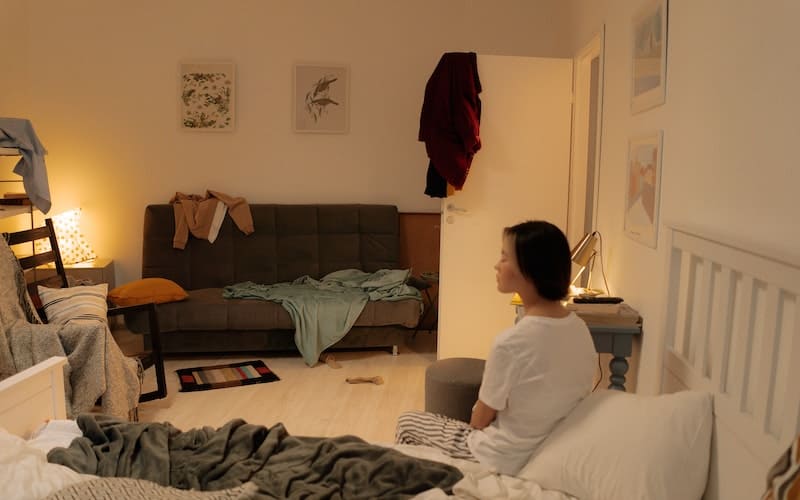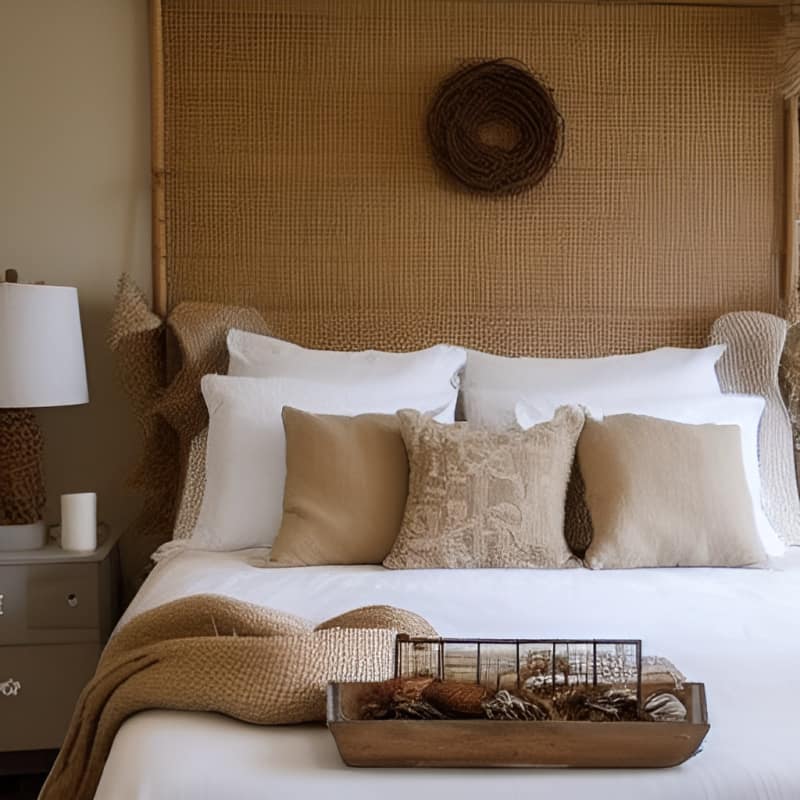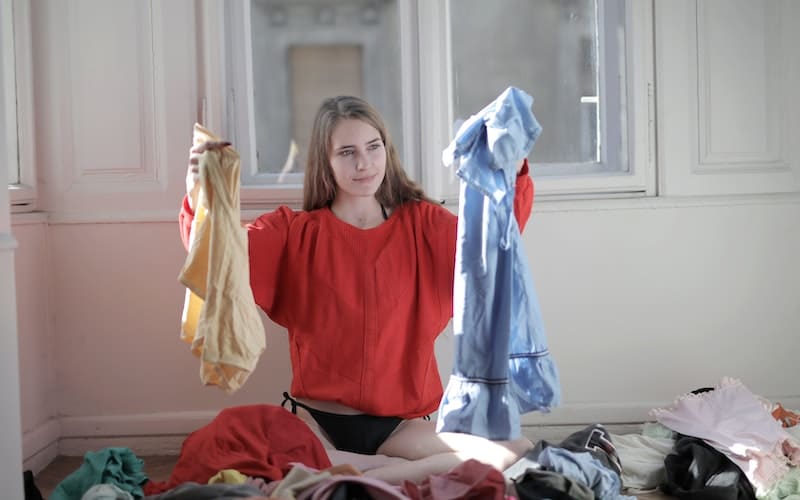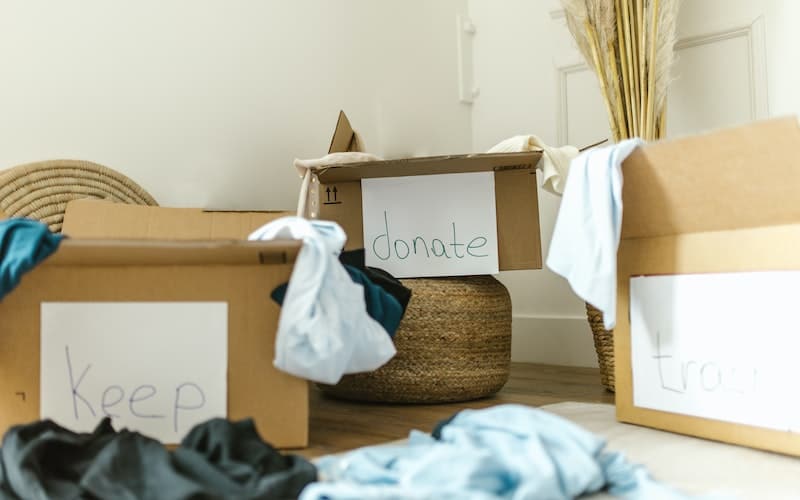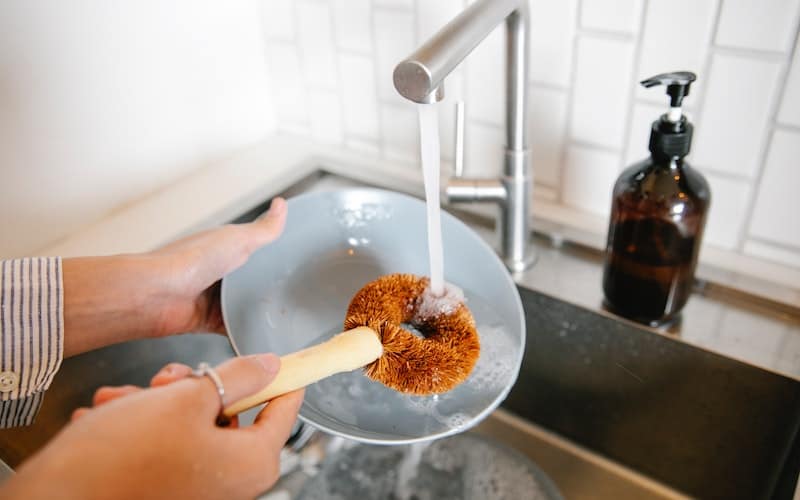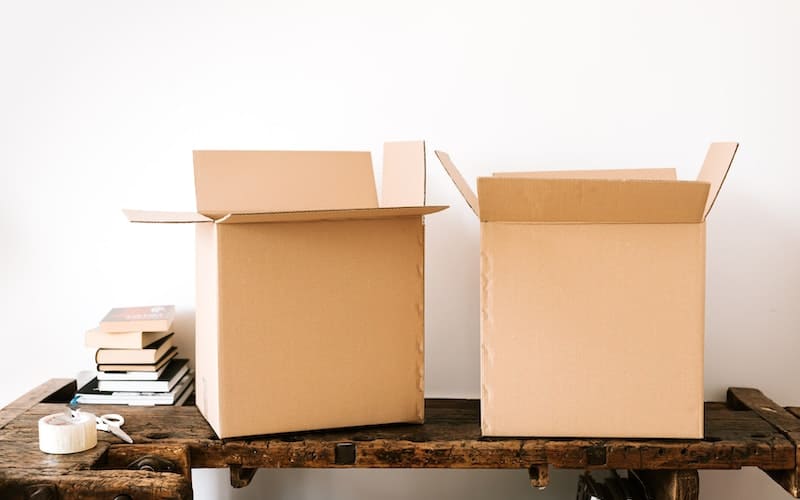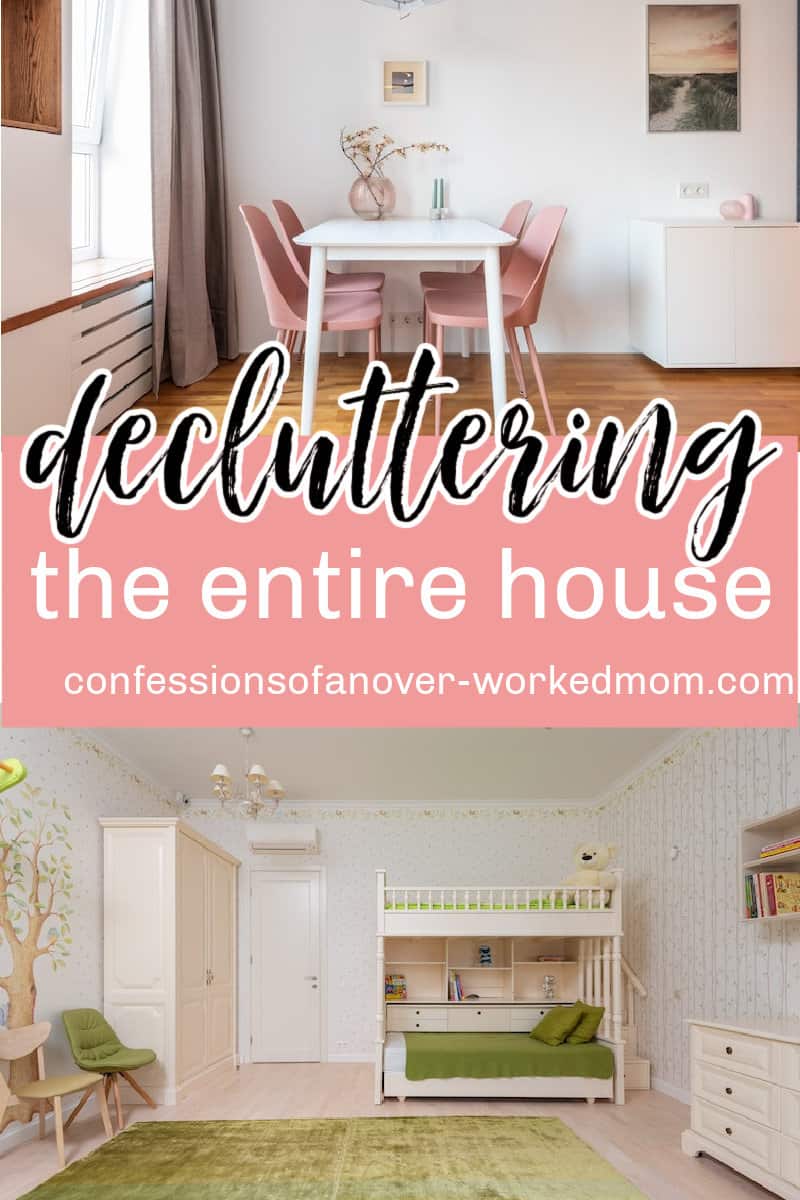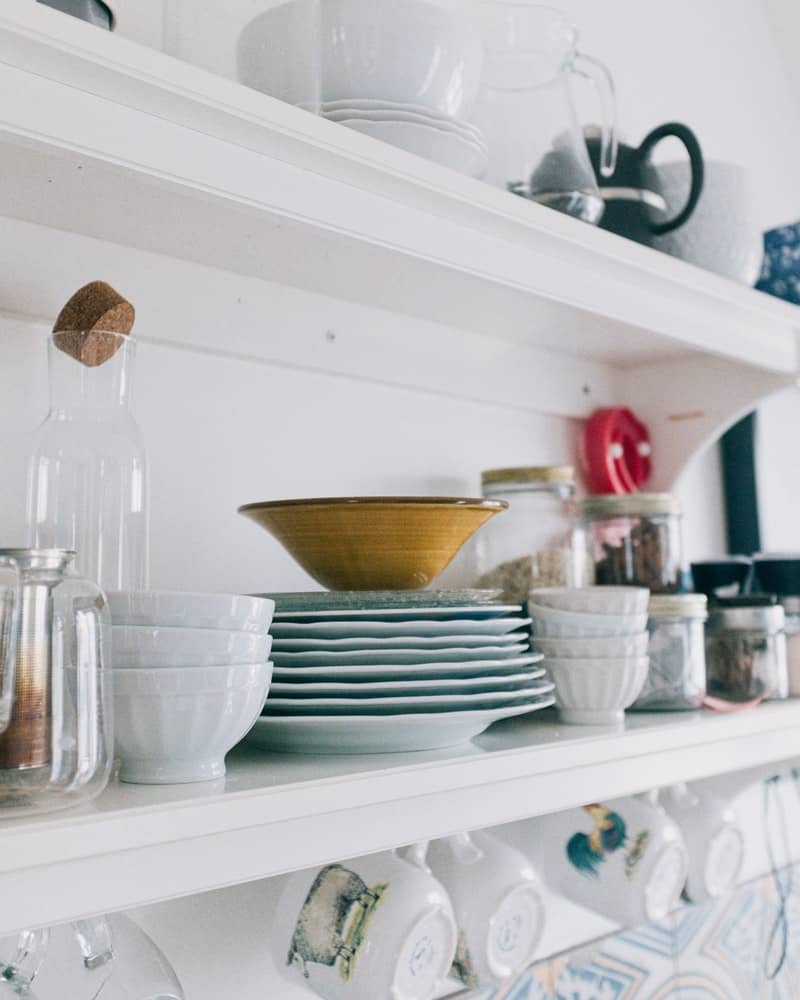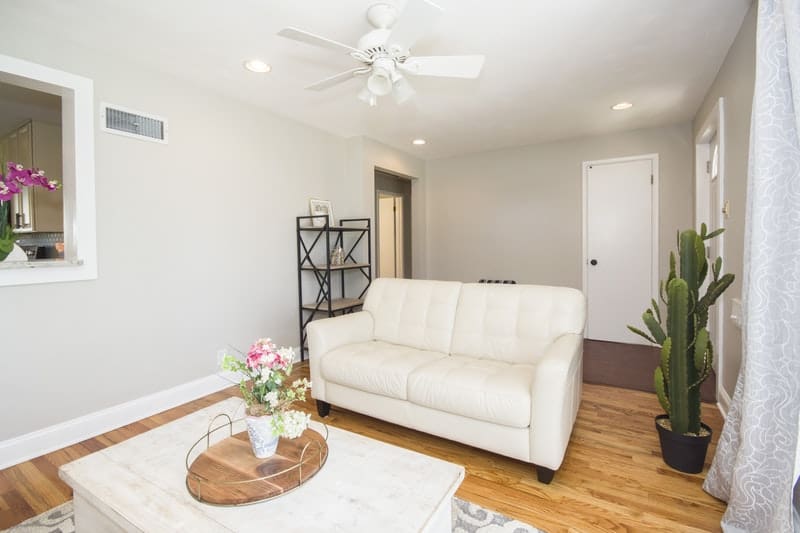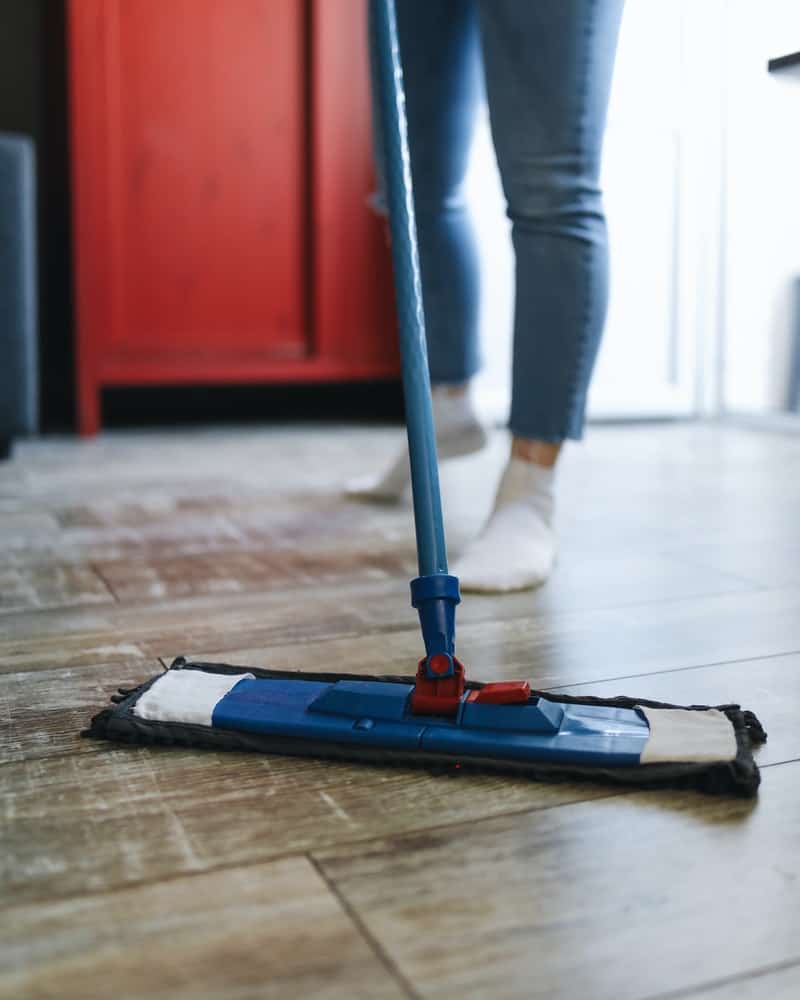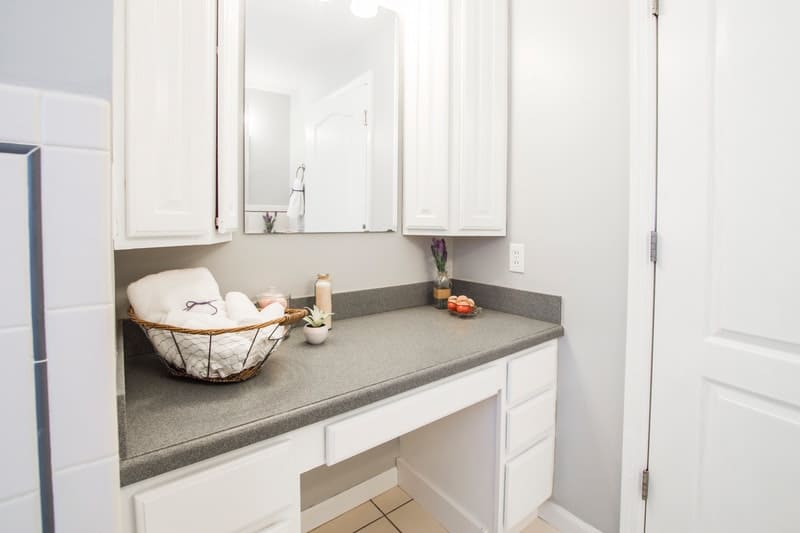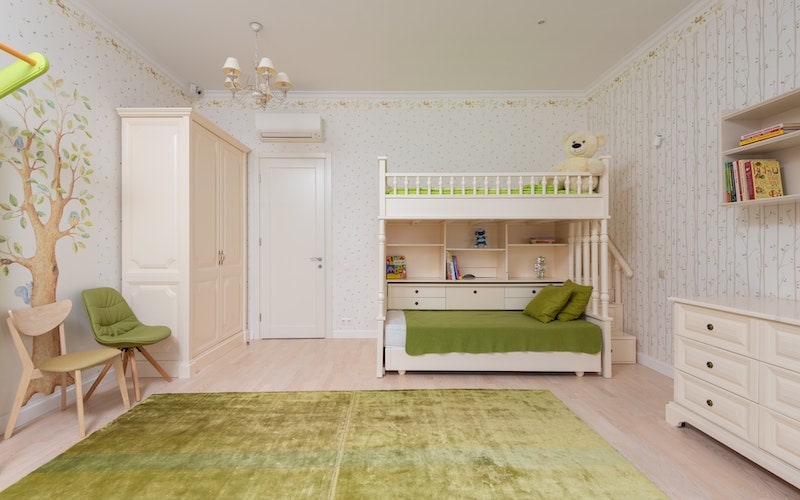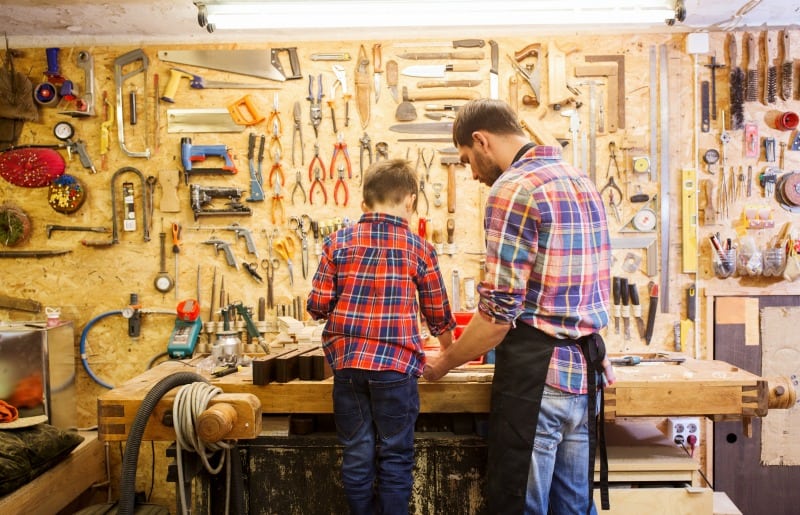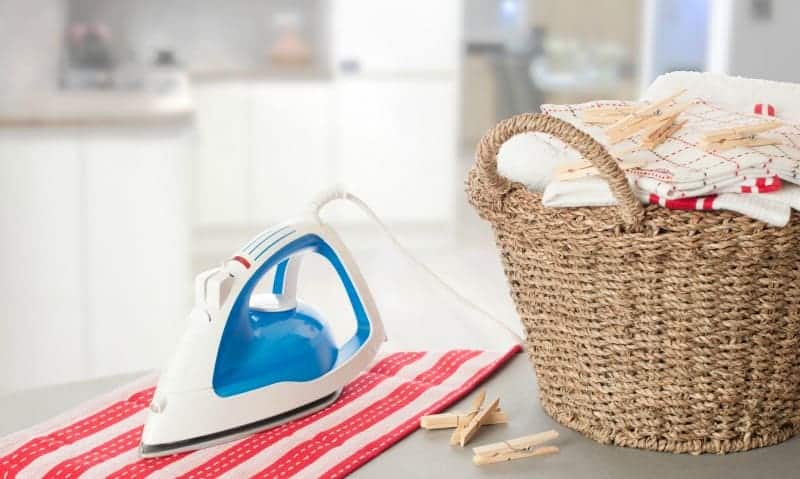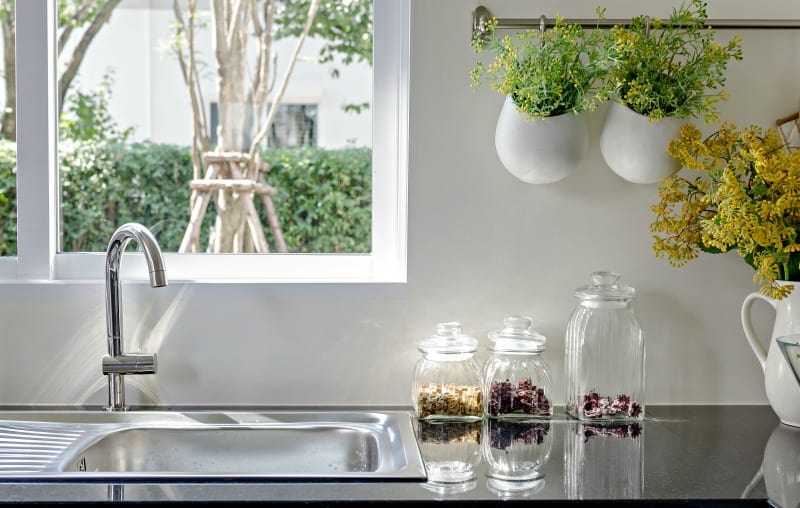Last Updated on August 31, 2023 by Ellen Christian
Wondering how to declutter your house in one day? Keep reading these tips to find out how you can have a clutter free home today.
Posts may be sponsored. This post contains affiliate links, which means I will make a commission at no extra cost to you should you click through and make a purchase. As an Amazon Associate I earn from qualifying purchases.
How to Declutter Your House in One Day
These decluttering tips will help you go from a cluttered house to a decluttered home in one day without using a professional organizer.
Get rid of unwanted items and learn how to keep your home clutter free once it’s done. It doesn’t have to be an overwhelming task when you use these ideas.
You can declutter the whole house by starting with just one area. If possible, include other family members in the process as well.
Can you declutter your home in one day?
Absolutely, decluttering your home in a single day is entirely achievable, but it does necessitate a strategic approach and a bit of elbow grease. The key lies in planning your process and committing to the task. It’s essential to have a clear idea of what you want to accomplish and to stay focused throughout the process.
Start by segmenting your home into different areas or rooms, and tackle each one systematically. You can begin with the least cluttered spaces, gradually working your way up to the most cluttered ones. This approach gives you small victories early on, motivating you to handle the more challenging areas.
Remember, decluttering doesn’t mean you have to get rid of everything. Instead, aim to remove items that no longer serve a purpose, are broken, or are simply taking up unnecessary space.
Consider donating items in good condition that you no longer need. Lastly, ensure you have a maintenance plan to keep your home clutter-free moving forward.
Benefits of a home without clutter
Living in a clutter-free home can significantly improve your quality of life. Here are seven benefits of maintaining a tidy living space:
Enhanced Focus: A clutter-free environment reduces distractions, helping you concentrate on tasks more effectively.
Less Stress: Clutter can create feelings of chaos, leading to stress. A tidy home, on the other hand, can promote tranquility and relaxation.
Saves Time: With everything organized and in its place, you’ll spend less time searching for misplaced items.
Improved Safety: Fewer obstacles mean less chance of tripping or hurting yourself.
Easier Cleaning: With less clutter, routine cleaning becomes easier and quicker.
More Space: Eliminating unnecessary items frees up space, making your home feel larger.
Boosts Productivity: An organized space can make you more productive, whether you’re working from home, pursuing a hobby, or performing routine chores.
Basic decluttering tips for beginners
Here are eight simple decluttering tips that can help beginners. Start here if you want to learn how to declutter your house in one day.
Start Small: Don’t overwhelm yourself by trying to tackle the entire house at once. Instead, start with a small area like a drawer or a shelf.
Set a Timer: Dedicate a specific amount of time to decluttering each day, even if it’s just 15 minutes. This will help create a habit.
Sort Into Categories: When decluttering, sort items into categories: keep, donate, sell, or discard.
Use Boxes or Bins: Use boxes or bins to keep items organized during the decluttering process.
Don’t Buy More Storage: Try not to buy new storage solutions until after you’ve decluttered. You might find you need less storage than you thought!
One In, One Out Rule: For every new item you bring into your home, try to get rid of one item.
Take Regular Breaks: Decluttering can be exhausting. Take regular breaks to avoid burnout.
Celebrate Your Successes: Take time to appreciate the progress you’re making. Celebrate your successes, no matter how small!
What is the 80 20 rule for decluttering a house?
The 80-20 rule, also known as the Pareto Principle, is a concept that can be applied to decluttering your house. It suggests that we typically use only 20% of our belongings 80% of the time.
This means that a lot of what we own isn’t regularly or ever used at all.
To apply this rule in decluttering, start by identifying the 20% of items you use most frequently. Then, question the usefulness and value of the remaining 80% of items. If these items are not contributing to your daily life or happiness, it might be time to consider letting them go.
This approach simplifies the decluttering process by focusing on what is truly essential. if you want to know how to declutter your house in one day, stick to this principle.
How do you start decluttering when overwhelmed?
Starting the decluttering process can be intimidating, especially when you’re feeling overwhelmed. It’s important to remember that every journey begins with a single step. Start small, perhaps with just a drawer or a shelf. Once you’ve successfully decluttered that area, you’ll feel a sense of achievement that can motivate you to tackle the next space.
In addition, break the task down into manageable chunks. Instead of thinking about decluttering the entire house, focus on one space or even one part of a room at a time. Set a timer for a short period, like 15 minutes, and devote that time to decluttering. You’ll be surprised how much progress you can make in those focused bursts, and you won’t feel as overwhelmed by the enormity of the task.
What is the 5 year rule for decluttering?
The 5-year rule for decluttering is a straightforward guideline to help you decide whether to keep an item or let it go. Essentially, it prompts you to ask yourself, “Have I used this in the last five years?” If the answer is no, then it’s likely you don’t need it and it’s time to part ways with the item.
This rule is particularly helpful when you’re dealing with items that you’re on the fence about. It can also apply to items with sentimental value. If you haven’t used or appreciated an item in five years, even if it holds some memories, it might be better let go of it to free up space.
Ultimately, the 5-year rule aims to simplify the decluttering process by helping you make decisions based on practicality.
Keep only what sparks joy
The phrase “keep only what sparks joy” originates from Marie Kondo’s revolutionary method of tidying up. In essence, this means you should only keep items in your home that elicit a positive emotional response, or ‘spark joy’.
These are items that make you feel happy, calm, or satisfied when you see or use them. It’s about choosing to surround yourself with things that enhance your life and contribute to a sense of well-being.
Contrary to common perceptions, this doesn’t mean that everything you own should make you burst with happiness. It’s more about an inherent appreciation or sense of contentment you derive from an item.
For instance, a book you love reading, a shirt that fits perfectly, or a tool that’s extremely useful can all ‘spark joy’ because they add value to your life in one way or another.
Lastly, this principle isn’t just about physical possessions. It also extends to the lifestyle choices you make, the people you surround yourself with, and the activities you engage in.
The goal is to foster a life where your everyday environment and experiences reflect the things that bring you joy, thus promoting overall happiness and satisfaction.
Declutter one room at a time
Focusing on one area at a time while decluttering is important because it allows you to concentrate on the task at hand without feeling overwhelmed. When you declutter the entire house simultaneously, you can easily become distracted, moving from one spot to another without completing any one area.
This disjointed approach can leave you feeling like you’re not making progress, which can be discouraging. However, by devoting your attention to a single room, you can see visible results more quickly, providing a sense of accomplishment and motivation to move on to the next space.
Furthermore, decluttering one room at a time enables you to apply a more systematic and thorough approach. By concentrating on a specific area, you can take the time to evaluate each item carefully, determining whether it serves a purpose or brings you joy.
This meticulous method ensures that nothing is overlooked or hastily discarded, allowing for more thoughtful and effective decluttering.
Lastly, by decluttering one area at a time, you can better manage your time and energy. Decluttering can be a mentally and physically draining process, and trying to tackle too much at once can lead to burnout.
By breaking down the task into smaller, more manageable parts, you can pace yourself, taking breaks as needed. This approach not only makes the process less daunting but also makes it more likely that you’ll see it through to completion.
How to declutter the kitchen
The kitchen is often the heart of the home, and keeping it decluttered can make cooking, cleaning, and dining a more pleasant experience. Start by emptying all your cupboards and storage space.
This may seem overwhelming, but seeing everything you own will give you a clear idea of how much you’ve accumulated. It’s important to remove everything, even if you think you’ll definitely keep an item. This step is crucial in helping you evaluate what you truly need and use.
Next, with everything out in the open, it’s time to sort through your items. Divide them into four categories: keep, donate, sell, and discard.
The ‘keep’ items should only be those that you use frequently or that spark joy. Remember, the goal here is to keep your kitchen clutter-free and functional.
The ‘donate’ and ‘sell’ piles will include items that are in good condition but are no longer needed in your kitchen. The ‘discard’ category is for items that are broken, damaged, or too worn out.
Once you’ve sorted your items, clean your empty cabinets and drawers. A decluttering task isn’t just about getting rid of items; it’s also a great opportunity to give your kitchen a deep clean.
Wipe down the interiors of your cupboards and drawers, clean the countertops, and ensure your appliances are sparkling. This will make putting things back a more satisfying experience and will help keep your kitchen looking tidy longer.
Finally, it’s time to put back the items you’ve chosen to keep. Organize them in a way that makes sense to you and suits your cooking habits. Items you use daily should be easy to reach.
Consider using drawer organizers or shelf risers to make the most of your space and keep everything visible. Remember, the goal is to create an efficient, pleasant space where you can cook and enjoy meals without stress.
Regularly review your kitchen items and declutter as needed to maintain your tidy and functional kitchen. Storage spaces should not be messy.
How to declutter the living room
The living room is a space where we spend a lot of time and where clutter can easily build up. To declutter your living room, start by removing all items from the room one by one.
This includes everything from small furniture and decor to small items like books, magazines, and remote controls. It may seem like a daunting task, but it’s an essential step in enabling you to see the amount of stuff you have.
Next, categorize each of these items into four groups: keep, donate, sell, and discard. Items that you regularly use or that spark joy should be kept.
Things that are in good condition but no longer serve you could be donated or sold. Old, damaged or worn-out items should be discarded. Make sure to be honest with yourself in this process to avoid keeping unnecessary items.
This leads to cluttered storage space.
Final steps in the living room
After you have categorized all items, give your living room a good cleaning. Vacuum or mop the floors, dust surfaces, and clean the windows.
This provides a fresh, clean slate to start redecorating and reorganizing. Take this opportunity to clean areas that might usually be neglected, like under the couch or behind the TV.
Finally, it’s time to put back the items you’ve decided to keep. Remember to put things back in a way that makes the most sense for your daily life. For example, remote controls should be easily reachable, and books can be arranged on a shelf or in a bookcase.
Using storage boxes and baskets can help keep your living room organized and clutter-free. And there you have it, a decluttered and organized living room that you can truly relax and unwind in. Remember to regularly go through your items and continue decluttering to maintain a clutter-free space.
How to declutter the bathroom
The bathroom can quickly become cluttered with toiletries, towels, and other items. Begin by taking everything out of the bathroom to clearly see what you have.
Lay out all of your products, tools, and towels so you can evaluate each one. This may feel time-consuming but it’s a crucial step to successful decluttering.
Next, it’s time to sort your items. Break them down into four groups: keep, donate, sell, and discard. Items that you use frequently or that bring you joy can go in the ‘keep’ pile.
Products that are unopened or lightly used and tools or decor you don’t need can be donated or sold. Anything expired, damaged, or not working should be disposed of.
Now that you’ve sorted your items, take a moment to clean your bathroom. With everything out of the room, it’s easier to get into all the nooks and corners.
Wipe down the counters, scrub the shower and toilet, and mop the floor. This step leaves your bathroom looking clean, making it much nicer when you put your ‘keep’ items back.
Finally, return your ‘keep’ items to the bathroom. Try to maintain order by grouping similar items together. For example, keep all your hair products in one place and your skincare in another.
Use trays, drawer dividers, or baskets to help keep things tidy in your bathroom cupboards. By taking the time to declutter, you’ll end up with a more functional, pleasant, and spacious bathroom.
If you want to declutter your house in one day, it’s important to keep it this way.
Decluttering tips for the bedroom
The bedroom should be a peaceful place, free from clutter. To make it so, start by taking out everything. This includes clothes in the wardrobe, items on the nightstand, and even things under the bed.
When you see all you have, it can be surprising, but it’s the first step towards a tidy bedroom. Now, it’s time to sort your things.
Make four groups: keep, donate, sell, and chuck away. Items you often use or love should stay. Items that are in good shape, but you don’t need anymore, can be given away or sold. If things are old, broken, or worn-out, they should be thrown away.
Next, clean your bedroom well. Vacuum the floor, dust the furniture, and wipe down surfaces. Cleaning your room while it’s empty is a good way to make sure every corner is clean.
Finally, place back only the items from your ‘keep’ pile. Try to keep things neat by putting similar items together.
For example, all your t-shirts could go in one drawer while pants go in another. This will make it easier to find what you need later.
Remember, a decluttered bedroom is a peaceful one. Keep it tidy by regularly sorting through your things.
Decluttering a child’s bedroom
Decluttering a child’s bedroom is an important task. Start by taking out all the toys, books, and clothes from the room. This helps you to see clearly how many things your child has.
It might be a lot, but don’t worry, this is the first step to a tidy room. Next, you will sort all these things into four groups: keep, donate, sell, and throw away.
The ‘keep’ group is for things your child uses often or really likes. If you have items that are still good but your child doesn’t use them, put them in the ‘donate’ or ‘sell’ group.
If there are old, broken, or damaged things, they go in the ‘throw away’ group. Remember, it’s okay to let go of things your child doesn’t need anymore.
After sorting, it’s time to clean the room. Dust off the furniture, mop the floor, and clean the windows. It’s easier to clean the room when it’s empty, and it will be nice and clean when you put the toys and clothes back.
Lastly, put back only the things from your ‘keep’ group. Try to keep similar things together. For example, put all the stuffed animals in one box and all the books on a shelf.
This will make it easier for your child to find their things. Remember, a tidy room is a happy room. Keep it clean by regularly sorting through your child’s things.
How to declutter the garage
The garage can often become a dumping ground for all sorts of items, from tools to old toys. To start decluttering, remove everything from your garage. This might seem like a big job, but it’s the best way to see exactly what you have stored.
Next, it’s time to sort through your things. Make four piles: keep, donate, sell, and throw away. If you use something often or it’s really important, put it in the ‘keep’ pile.
Things that are still good but you don’t use can go in the ‘donate’ or ‘sell’ pile. If something is broken, dirty, or you just don’t need it, put it in the ‘throw away’ pile.
Once you’ve sorted your things, give your garage a thorough clean. Sweep the floor, clean any windows, and dust off shelves. This will give you a nice clean space to organize your ‘keep’ pile.
Finally, it’s time to put your ‘keep’ items back in the garage. Try to group similar items together to make them easier to find. For example, keep all your tools in one area, and kids’ toys in another.
Remember, a tidy garage is easier to use. Try to keep it clean by regularly sorting through your items.
How to clean out the laundry room
Cleaning out the laundry room can be a simple process when tackled methodically. To begin, take everything out of the room, including detergents, fabric softeners, clothes, and any miscellaneous items you may have stored there.
This gives you a clear view of what you have and allows you to evaluate each item’s necessity. Next, categorize all the items into four groups: keep, donate, sell, and discard.
Regularly used items that are in good condition should go into the ‘keep’ pile. Any extra items still in good shape but not needed can be donated or sold. Items that are expired, no longer functional, or broken should be discarded.
After sorting, take the opportunity to thoroughly clean the room while it’s empty. Wipe down all surfaces, clean inside cupboards, and sweep and mop the floor.
Once everything is neat and clean, return the items from your ‘keep’ pile to the room. Organize them in a way that makes the most sense for your usage patterns, perhaps keeping washing detergents and softeners together while storing clean towels and other necessities within easy reach.
Remember, a decluttered laundry room makes laundry chores much easier and less stressful.
What should you not throw out when decluttering?
When decluttering, there are certain items you should think twice before throwing out. Firstly, important documents such as passports, birth certificates, marriage licenses, wills, property deeds, and insurance policies should always be kept.
These are often difficult to replace and are crucial in various legal circumstances. Similarly, financial documents like tax returns and bank statements should be retained for a certain period as required by law or for personal reference.
Secondly, family heirlooms and irreplaceable items of sentimental value should typically be spared from the decluttering process. This could include photo albums, letters, or items passed down through generations.
While these might not serve a daily practical purpose, they carry emotional significance and family history that could be appreciated in years to come. Remember, the primary goal of decluttering is to eliminate unnecessary clutter, not to discard items that hold personal significance or are important for legal or financial reasons.
When your thinking about how to declutter your house in one day, it can be tempting to get rid of things without thinking. Here are some tips for decluttering sentimental photographs.
Declutter your house in one day
In conclusion, decluttering can profoundly impact the harmonious flow within our living spaces, promoting a more organized, efficient, and peaceful environment.
It’s not just about getting rid of things, but about making our spaces supportive of our daily lives. When we sort, clean, and arrange, we create rooms that are easy to navigate, which can reduce stress and improve our overall well-being.
Let’s not forget that decluttering is a process, not a one-time event. It requires ongoing effort and decision-making about what to keep, sell, donate, or discard.
At times, the process may seem daunting, but by breaking it down into manageable tasks and categories, we can triumph over clutter. And always remember, it isn’t about creating a perfect space, but a space that perfectly suits you.
How to keep your home decluttered

Ellen is a busy mom of a 24-year-old son and 29-year-old daughter. She owns six blogs and is addicted to social media. She believes that it doesn’t have to be difficult to lead a healthy life. She shares simple healthy living tips to show busy women how to lead fulfilling lives. If you’d like to work together, email info@confessionsofanover-workedmom.com to chat.

